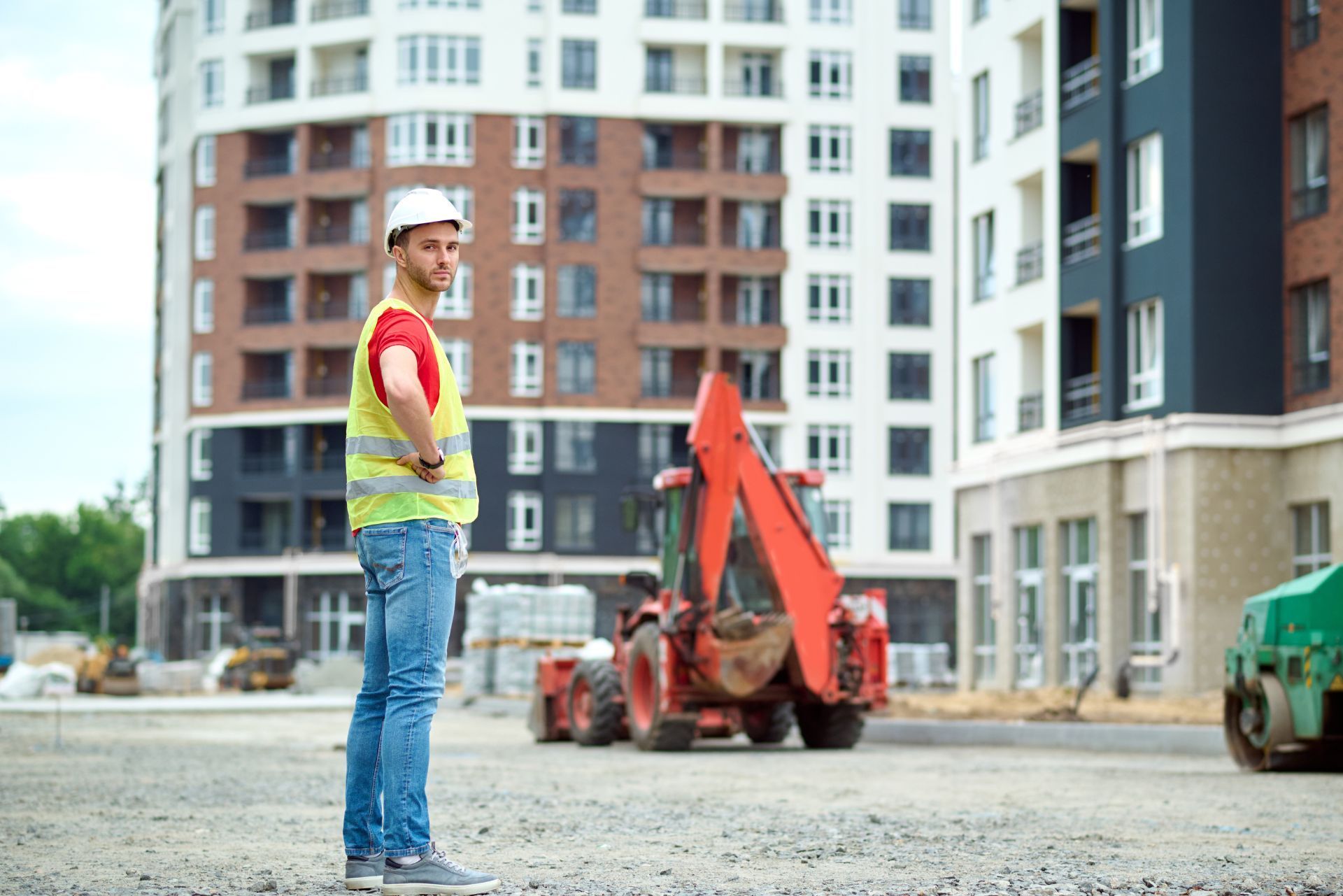Indiana Builder's Risk Insurance

See How We're Different:
or call us: (619) 734-7477
Top 3 Recommended Policies
Index
What is Builder's Risk Insurance?
Why is Builder's Risk Insurance Important in Indiana?
What Does Builder's Risk Insurance Cover?
Exclusions in Builder's Risk Insurance
How to Obtain Builder's Risk Insurance in Indiana
Cost of Builder's Risk Insurance in Indiana
Understanding the Claims Process
Contact Us
Phone
Location
When embarking on a construction project in Indiana, one of the most critical aspects to consider is insurance. Specifically, builder's risk insurance plays a pivotal role in safeguarding your investment. This article delves into the essentials of builder's risk insurance, covering its purpose, coverage options, and the nuances specific to Indiana.
What is Builder's Risk Insurance?
Builder's risk insurance, also known as course of construction insurance, is a specialized form of property insurance designed to protect buildings under construction. This coverage typically safeguards against risks such as theft, vandalism, and certain types of damage that can occur during the building process. It serves as a crucial safety net for contractors, developers, and property owners, ensuring that their investments are protected during the often unpredictable construction phase.
Unlike standard property insurance, builder's risk insurance is temporary and is intended to cover the period during which construction is underway. Once the construction is completed and the building is occupied, the policy typically ends, and a different type of insurance, such as homeowners or commercial property insurance, takes over. This transition is vital as it allows property owners to switch to a more comprehensive policy that covers the building's ongoing risks once it is fully operational.
Key Features of Builder's Risk Insurance
Builder's risk insurance comes with several key features that make it distinct from other types of insurance. First and foremost, it covers the building itself, including materials, fixtures, and equipment that are part of the construction project. Additionally, it often includes coverage for materials stored on-site or even off-site, as long as they are intended for use in the project. This flexibility ensures that all aspects of the construction process are safeguarded, from the initial stages to the final touches.
Another important feature is that builder's risk insurance can be tailored to fit the specific needs of the project. This means that policyholders can choose the coverage limits, deductibles, and additional endorsements based on the size and scope of their construction endeavor. For instance, larger projects may require higher coverage limits to account for the increased value of materials and labor, while smaller projects might opt for a more basic policy. Furthermore, builders can add endorsements for specific risks such as natural disasters or equipment breakdowns, providing a customized safety net that aligns with the unique challenges of their construction site.
Moreover, builder's risk insurance often includes coverage for soft costs, which can encompass expenses like architectural fees, permits, and financing costs that may arise if construction is delayed due to covered losses. This aspect of the policy is particularly beneficial, as it helps mitigate the financial impact of unforeseen events that could otherwise derail a project, ensuring that builders can maintain their timelines and budgets even in the face of adversity. By offering comprehensive protection that extends beyond just the physical structure, builder's risk insurance plays a pivotal role in the successful completion of construction projects.
Why is Builder's Risk Insurance Important in Indiana?
Indiana's unique climate and construction landscape present specific challenges that make builder's risk insurance particularly important. From severe storms to theft, various risks can jeopardize a construction project. Having the right insurance coverage can mitigate these risks and provide peace of mind to builders and property owners alike.
Natural Disasters and Weather-Related Risks
Indiana experiences a range of weather conditions, including heavy rains, snowstorms, and tornadoes. These natural events can cause significant damage to construction sites, leading to delays and increased costs. Builder's risk insurance can help cover the financial losses associated with such incidents, ensuring that projects can continue without devastating financial repercussions. Additionally, the state's geographical location makes it susceptible to sudden weather changes, which can catch construction teams off guard. For instance, a sunny morning can quickly turn into a thunderstorm, resulting in water damage to exposed structures. Having builder's risk insurance means that contractors can focus on their work, knowing that they are financially protected against these unpredictable events.
Theft and Vandalism Concerns
Construction sites are often targets for theft and vandalism due to the presence of valuable materials and equipment. Indiana has seen its share of construction-related thefts, which can result in substantial losses. Builder's risk insurance provides coverage for stolen items, helping to recover losses and keep projects on track. Furthermore, the risk of vandalism is not just limited to theft; it can also include damage to equipment or intentional destruction of property. This can lead to costly repairs and further delays in project timelines. By investing in builder's risk insurance, contractors can not only safeguard their materials but also ensure that they have the resources to address any potential setbacks caused by these unfortunate incidents. This protective measure fosters a more secure working environment, encouraging contractors to invest in larger projects without the looming fear of financial loss due to criminal activities.

What Does Builder's Risk Insurance Cover?
Understanding the coverage provided by builder's risk insurance is essential for anyone involved in a construction project. While specific policies may vary, there are common elements that most builder's risk insurance policies include.
Coverage for Property Damage
One of the primary components of builder's risk insurance is coverage for property damage. This can include damage caused by fire, wind, hail, and other perils. If a storm damages the structure or materials, the insurance can help cover repair costs, ensuring that the project can proceed without significant financial strain. Additionally, many policies also cover vandalism and theft, which can be particularly important in urban areas where construction sites may be more vulnerable to such risks. Understanding the specific perils covered can help project managers make informed decisions about risk management and safety protocols on-site.
Coverage for Materials and Equipment
Builder's risk insurance typically covers materials and equipment used in the construction process. This includes everything from lumber and roofing materials to heavy machinery. If these items are damaged or stolen, the policy can help replace them, minimizing disruptions to the construction timeline. Furthermore, some policies may also extend coverage to temporary structures, such as scaffolding or storage containers, which are essential for the construction process. This added layer of protection can be invaluable, especially in larger projects where the investment in materials and equipment is substantial.
Liability Coverage
While builder's risk insurance primarily focuses on property coverage, some policies may also include liability coverage. This can protect against claims arising from injuries that occur on the construction site. It’s crucial to review the policy details to understand the extent of liability coverage included. In addition to personal injury claims, liability coverage may also address property damage claims made by third parties, which can arise from accidents involving construction equipment or debris. Being aware of these potential liabilities can help contractors and project owners implement better safety measures and training for workers, ultimately fostering a safer work environment.
Exclusions in Builder's Risk Insurance
While builder's risk insurance provides valuable coverage, it is equally important to be aware of the exclusions that may apply. Understanding what is not covered can help builders and property owners avoid unexpected expenses.
Common Exclusions
Builder's risk insurance typically excludes coverage for certain types of damage, such as wear and tear, mechanical breakdowns, and faulty workmanship. Additionally, damage caused by intentional acts or criminal activities may not be covered. It is essential to read the policy carefully to identify these exclusions and consider additional coverage if necessary. For instance, if a contractor inadvertently uses subpar materials that lead to structural issues, the costs associated with repairing such defects may fall outside the scope of the policy. This emphasizes the importance of hiring qualified professionals and ensuring that all work meets industry standards.
Natural Disasters and Special Events
Some policies may exclude coverage for specific natural disasters, such as earthquakes or flooding. In Indiana, where flooding can be a concern, it may be necessary to purchase additional flood insurance to ensure comprehensive protection. Understanding these nuances can help in selecting the right policy for a construction project. Furthermore, certain policies may also exclude coverage for acts of terrorism or vandalism, which can be particularly relevant in urban areas where construction sites may be more vulnerable. Builders should assess the risks associated with their specific location and consider endorsements that can provide additional protection against these potential threats.
Regulatory and Legal Exclusions
In addition to the physical damage exclusions, builder's risk insurance may also have regulatory and legal exclusions. For instance, if a construction project does not comply with local building codes or zoning laws, any resulting damage may not be covered. This highlights the necessity for builders to stay informed about the legal requirements in their area and to ensure that all necessary permits are obtained before commencing work. Failure to adhere to these regulations can lead to costly delays and repairs that are not covered by insurance, further emphasizing the importance of thorough planning and compliance in any construction endeavor.
How to Obtain Builder's Risk Insurance in Indiana
Acquiring builder's risk insurance in Indiana involves several steps. It is essential to approach the process methodically to ensure adequate coverage for the construction project.
Assess Your Coverage Needs
Before seeking insurance, it is crucial to assess the specific needs of the construction project. This includes evaluating the project's size, scope, and potential risks. Understanding these factors will help in determining the appropriate coverage limits and policy options. Additionally, consider the type of materials being used and the construction methods employed, as these can significantly influence the risk profile. For instance, projects that involve high-value materials or complex construction techniques may require higher coverage limits to protect against theft, damage, or unforeseen delays.
Consult with Insurance Agents
Working with an insurance agent who specializes in builder's risk insurance can provide valuable insights. These professionals can help navigate the various policy options, exclusions, and endorsements available. They can also assist in comparing quotes from different insurance providers to find the best coverage at a competitive price. Furthermore, an experienced agent can offer guidance on local regulations and requirements that may affect coverage, ensuring compliance with Indiana's construction laws. This expertise can be particularly beneficial for first-time builders or those unfamiliar with the intricacies of construction insurance.
Review and Customize Your Policy
Once a policy is selected, it is important to review the details thoroughly. Ensure that the coverage limits, deductibles, and any additional endorsements align with the specific needs of the construction project. Customizing the policy can provide enhanced protection against unique risks associated with the project. For example, consider adding coverage for natural disasters, such as floods or tornadoes, which can be particularly relevant in certain areas of Indiana. Additionally, reviewing the policy regularly throughout the construction process can help address any changes in project scope or risk exposure, ensuring that the coverage remains adequate as the project evolves.

Cost of Builder's Risk Insurance in Indiana
The cost of builder's risk insurance can vary significantly based on several factors. Understanding these factors can help builders and property owners budget effectively for this essential coverage.
Factors Influencing Cost
Several factors influence the cost of builder's risk insurance, including the total construction value, the location of the project, and the duration of the construction period. Projects in high-risk areas or those with higher construction values may incur higher premiums. Additionally, the type of materials used and the overall complexity of the project can also affect costs. For instance, a project utilizing high-end finishes or innovative construction techniques may attract additional scrutiny from insurers, leading to increased premiums. Moreover, the experience and track record of the builder can play a role; seasoned builders with a history of successful projects may qualify for lower rates due to their established reputation for managing risks effectively.
Average Premiums
On average, builder's risk insurance premiums can range from 1% to 4% of the total construction cost. For example, if a project is valued at $500,000, the insurance premium may range from $5,000 to $20,000. It is advisable to obtain multiple quotes to ensure competitive pricing and adequate coverage. Furthermore, it is important to consider the specific terms of the policy, as some may offer broader coverage options or lower deductibles, which could ultimately save money in the event of a claim. Additionally, some insurers may provide discounts for bundling policies or for implementing certain safety measures on-site, such as security systems or regular safety audits, which can further help in managing insurance costs.
Understanding the Claims Process
In the unfortunate event that a claim needs to be filed, understanding the claims process is crucial. This knowledge can help ensure a smoother experience when dealing with insurance providers.
Steps to File a Claim
Filing a claim typically involves several steps. First, it is essential to notify the insurance provider as soon as possible after the incident occurs. This prompt communication can help expedite the claims process. Next, gather all relevant documentation, including photographs of the damage, receipts for materials, and any police reports if theft or vandalism is involved.
Once the documentation is prepared, submit the claim to the insurance provider. The insurer will then review the claim, assess the damage, and determine the coverage applicable. This process may involve an adjuster visiting the site to evaluate the extent of the damage.
Common Challenges in the Claims Process
While many claims are processed smoothly, challenges can arise. Disputes over coverage limits, exclusions, or the extent of damage can complicate the process. To mitigate these challenges, maintaining clear communication with the insurance provider and having thorough documentation can be beneficial.
Best Practices for Managing Builder's Risk Insurance
Managing builder's risk insurance effectively can enhance the protection it offers. Implementing best practices can help ensure that the coverage remains relevant and adequate throughout the construction process.
Regularly Review Your Policy
As the construction project evolves, so may the risks associated with it. Regularly reviewing the builder's risk insurance policy can help identify any necessary adjustments to coverage limits or endorsements. This proactive approach can prevent gaps in coverage and ensure that the policy aligns with the current state of the project.
Maintain Detailed Records
Keeping detailed records of the construction process, including invoices, contracts, and correspondence, can be invaluable. In the event of a claim, having organized documentation can streamline the process and support the validity of the claim. Additionally, maintaining records of inspections and safety measures taken can demonstrate due diligence.
Conclusion
Builder's risk insurance is an essential component of any construction project in Indiana. Understanding its purpose, coverage options, and the specific risks associated with the state can help builders and property owners protect their investments. By assessing coverage needs, consulting with insurance professionals, and implementing best practices, individuals can navigate the complexities of builder's risk insurance with confidence.
In a landscape where construction projects can be fraught with challenges, having the right insurance coverage can make all the difference. Whether facing natural disasters, theft, or unforeseen damages, builder's risk insurance provides a safety net that ensures projects can continue to move forward, safeguarding both financial investments and peace of mind.
